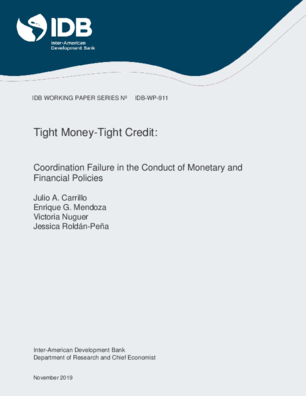Tight Money-Tight Credit: Coordination Failure in the Conduct of Monetary and Financial Policies
Date
Nov 2019
Summary
Violations of Tinbergen’s Rule and strategic interaction undermine monetary and financial policies significantly in a New Keynesian model with the Bernanke-Gertler accelerator. Welfare costs of risk shocks are large because of efficiency losses and income effects of costly monitoring, but they are larger under a simple Taylor rule (STR) and a Taylor rule augmented with credit spreads (ATR) than under a dual rules regime (DRR) with a Taylor rule and a financial rule targeting spreads, by 264 and 138 basis points respectively. ATR and STR are tight money-tight credit regimes that respond too much to inflation and not enough to spreads,and yield larger fluctuations in response to risk shocks. Reaction curves display shifts from strategic substitutes to complements in the choice of policy-rule elasticities. The Nash equilibrium is also a tight money-tight credit regime, with welfare 30 basis points lower than in Cooperative equilibria and the DRR, but still sharply higher than in the ATR and STR regimes.




